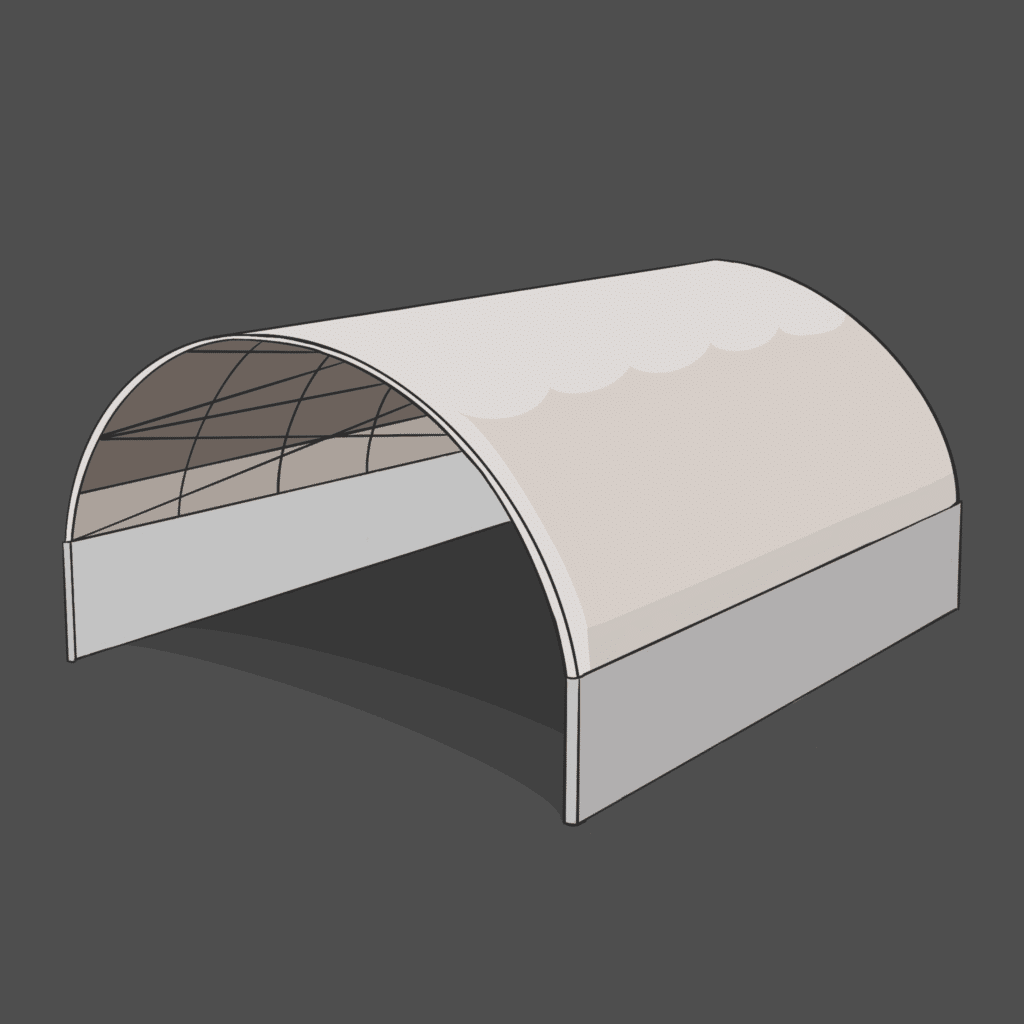Tension Fabric Structures
What Are Tension Fabric Structures Used For?
Tension fabric buildings are commonly used for recreational areas, workspace, and storage. People who enjoy sports such as tennis, soccer, and horseback riding choose fabric structures because of their big open area, high ceilings, and weather dependability. People frequently look for the most storage space they can afford to protect goods they want to save.
No matter the industry or function, these strong steel buildings are built to withstand the harshest environment. Skyler Structures fabric-covered buildings can be used for animal housing, equestrian riding arenas, materials storage, warehousing, protecting important equipment, increasing your company’s office, and much more.
Who Uses Tension Fabric Structures?
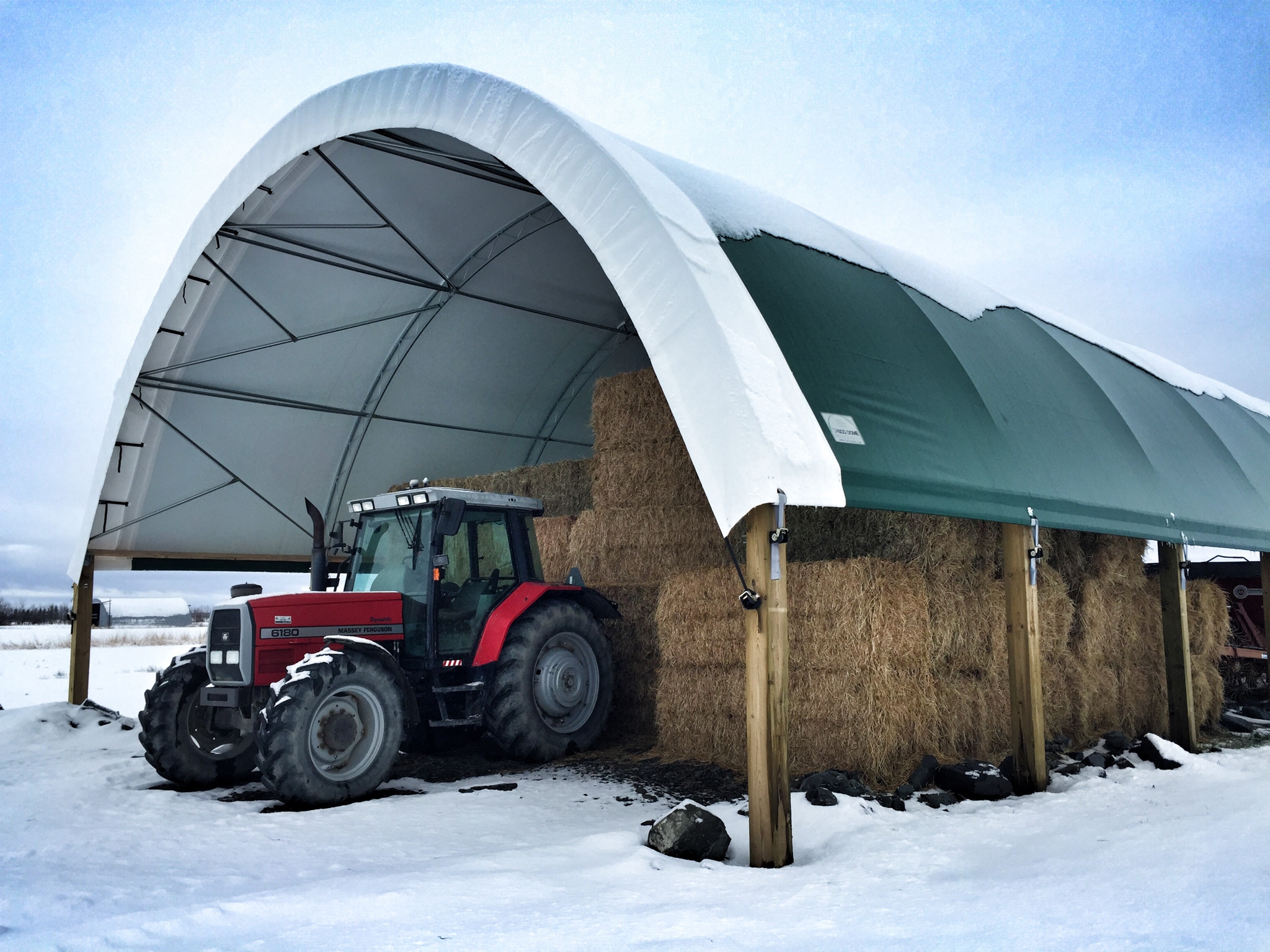
Installation
Tension fabric building installation is a rather short and straightforward operation due to the size of the buildings. Fabric buildings are frequently installed in less than half the time that similar steel or conventional buildings take. Offsite construction and straightforward assembly are two intrinsic benefits of fabric buildings that speed up the construction process.
These structures are made out of prefabricated components that are manufactured in a climate-controlled offsite construction facility. For that reason, no time is lost due to weather delays. Furthermore, while the structural components are being manufactured at the manufacturing facility, a site team can be preparing the construction site and foundation at the same time, increasing efficiency and downtime.
Despite their size, cloth structures are deceptively simple to assemble. Truss segments are bolted together using basic connectors. Once the components arrive at the construction site, installation frequently boils down to days rather than weeks or months.
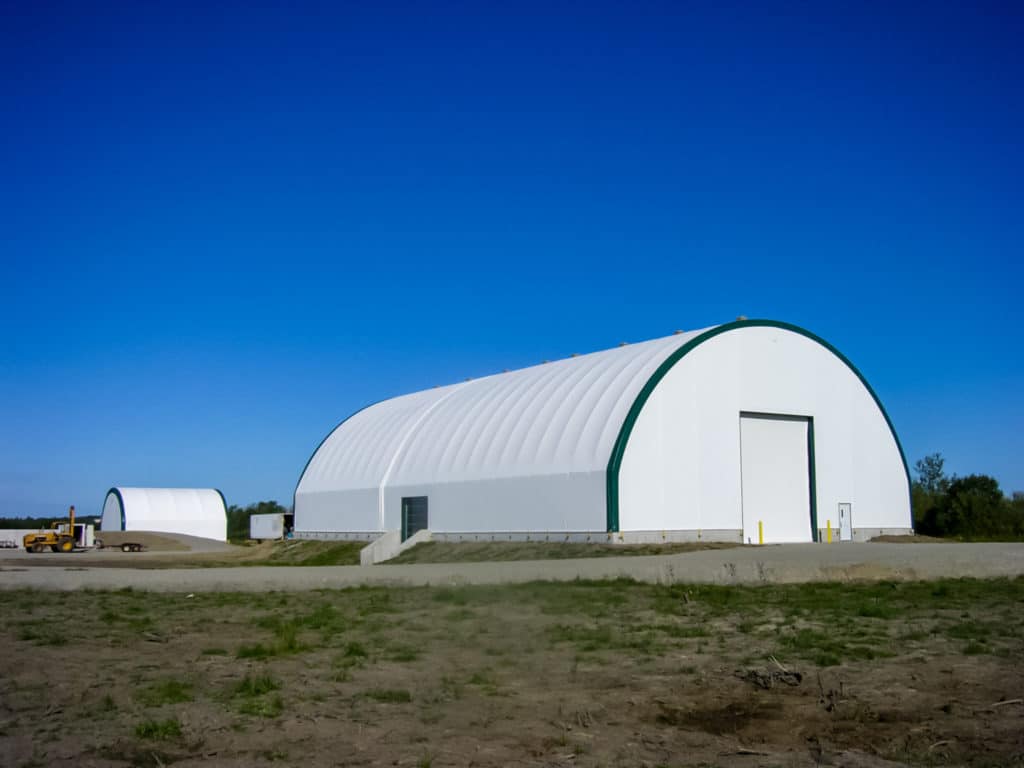
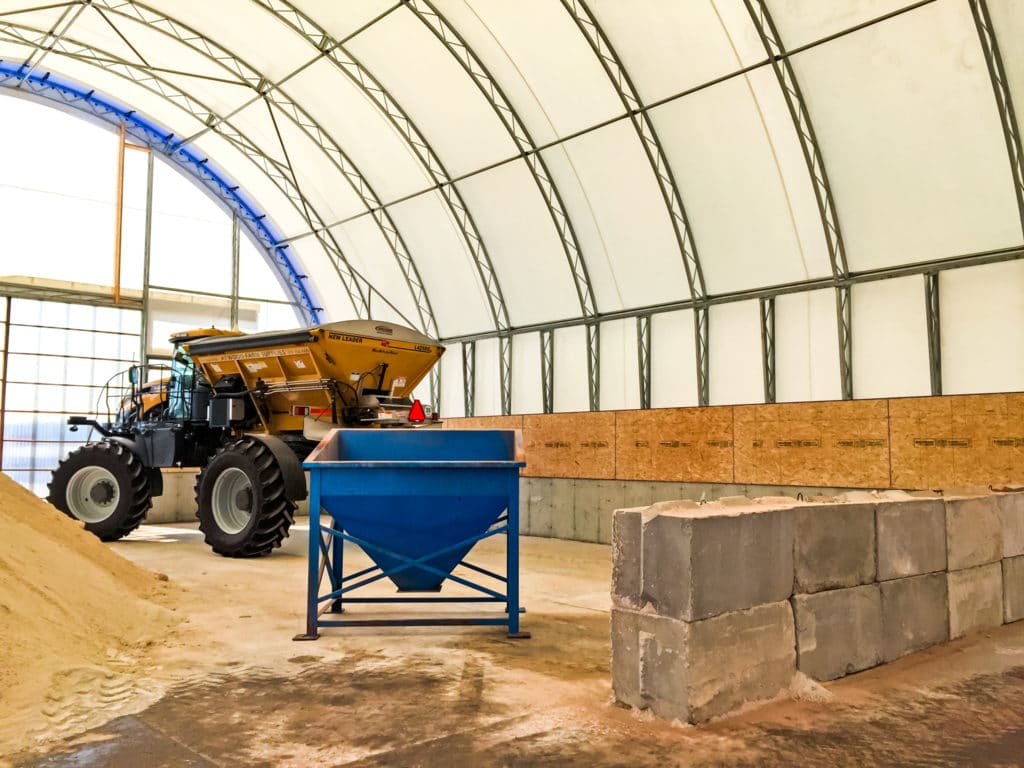
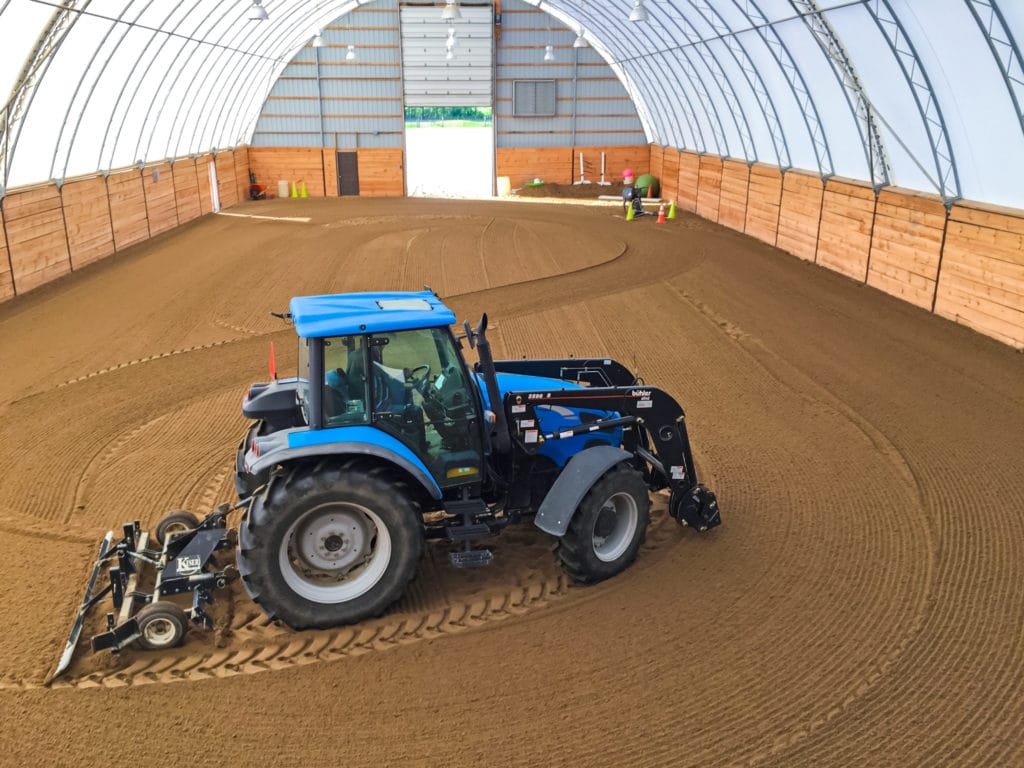
Foundation Options
Temporary Foundations
Permanent Foundations
Temporary and Permanent Foundation Options
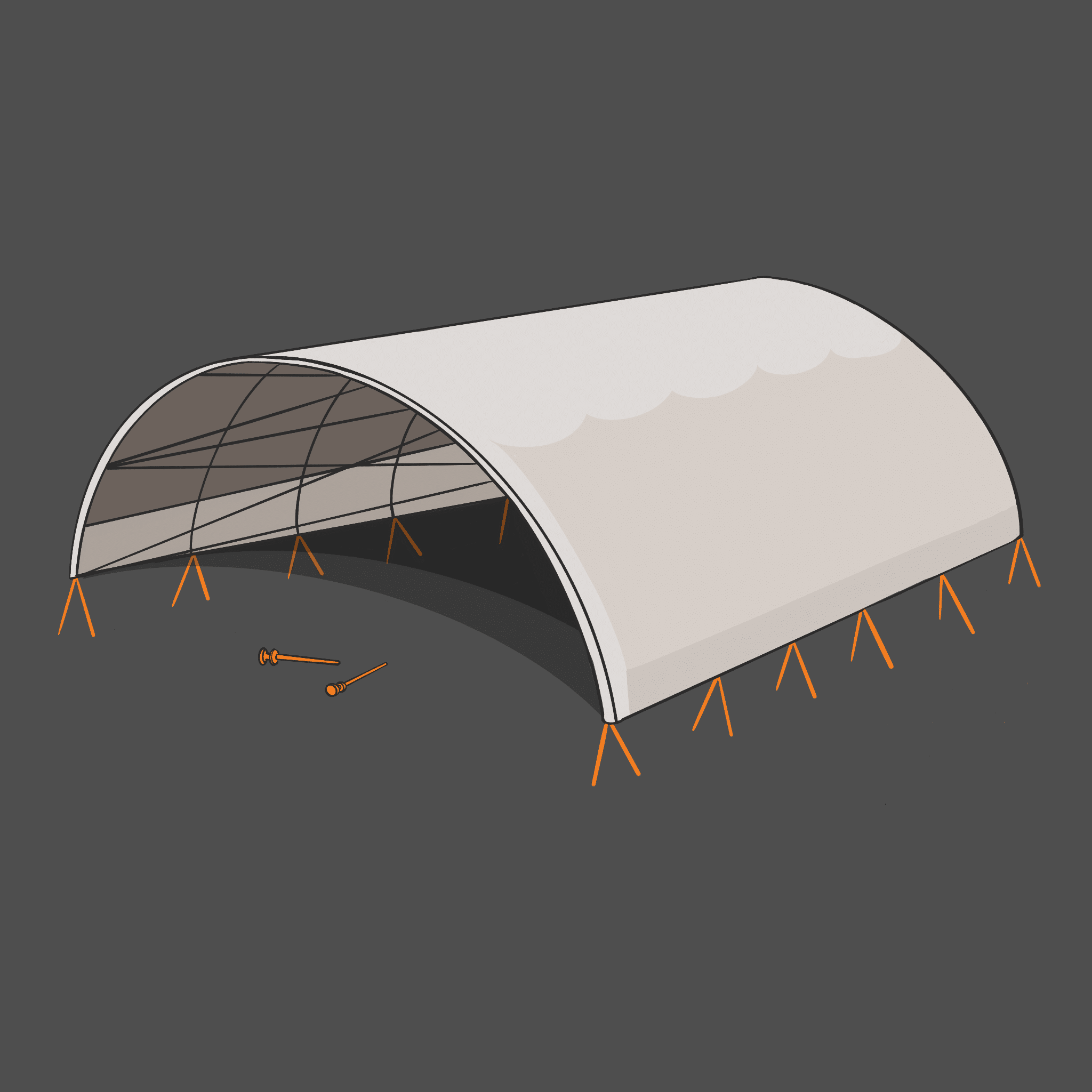
Hogan Stakes
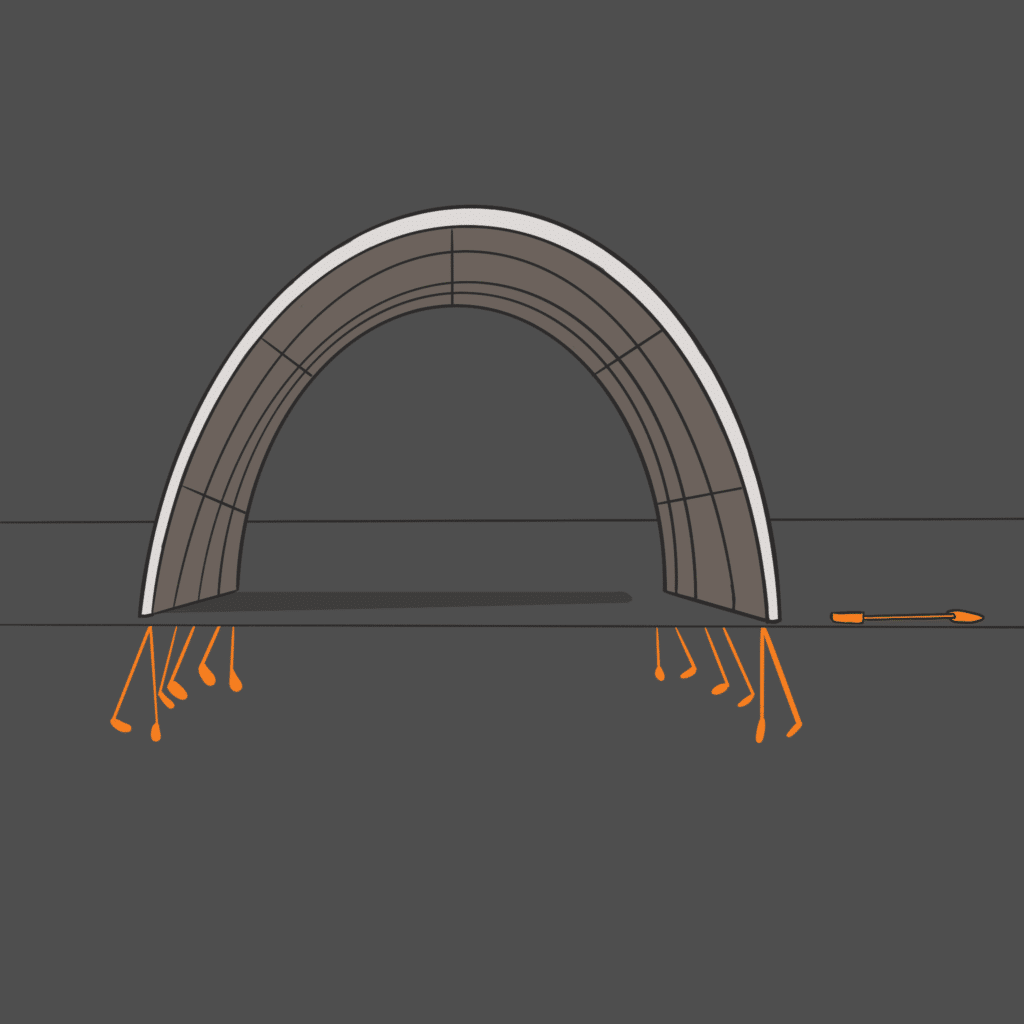
Duckbill Anchors
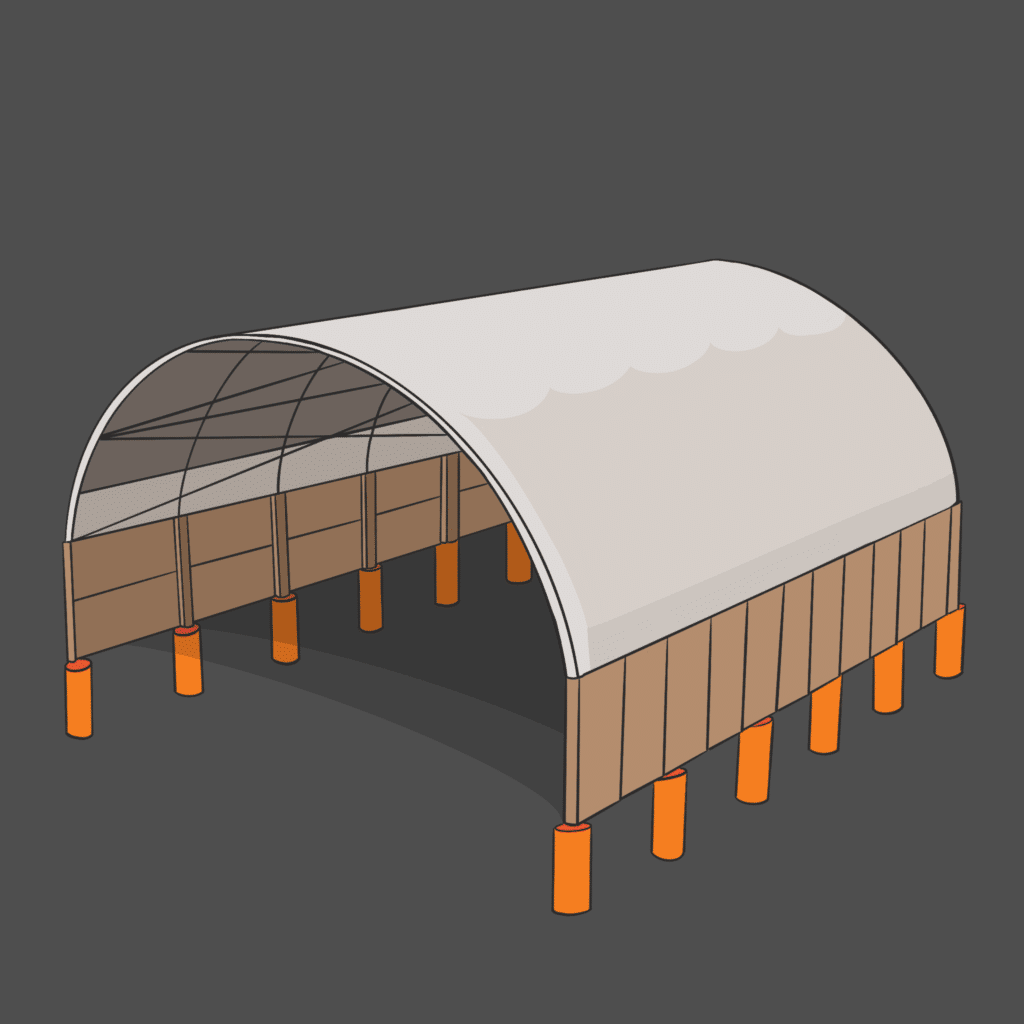
Wood Posts
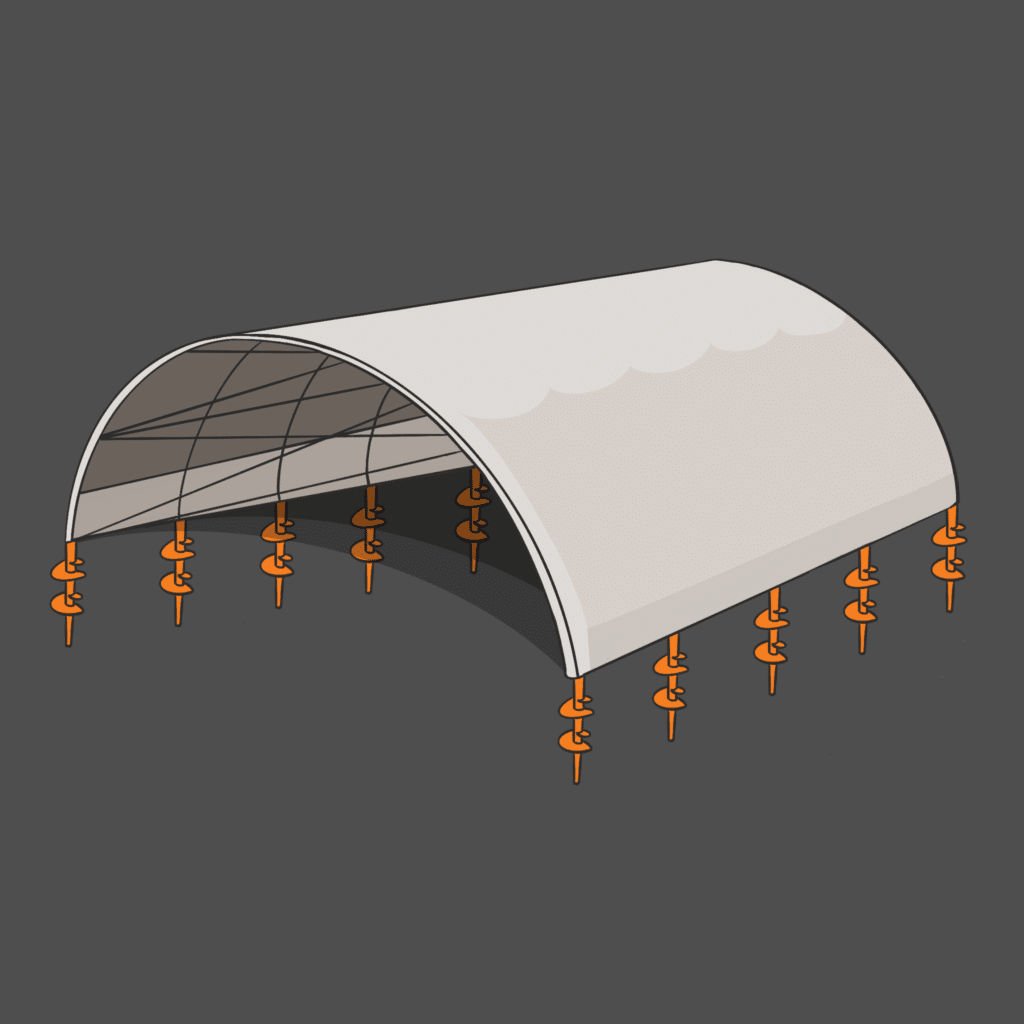
Helical Anchors
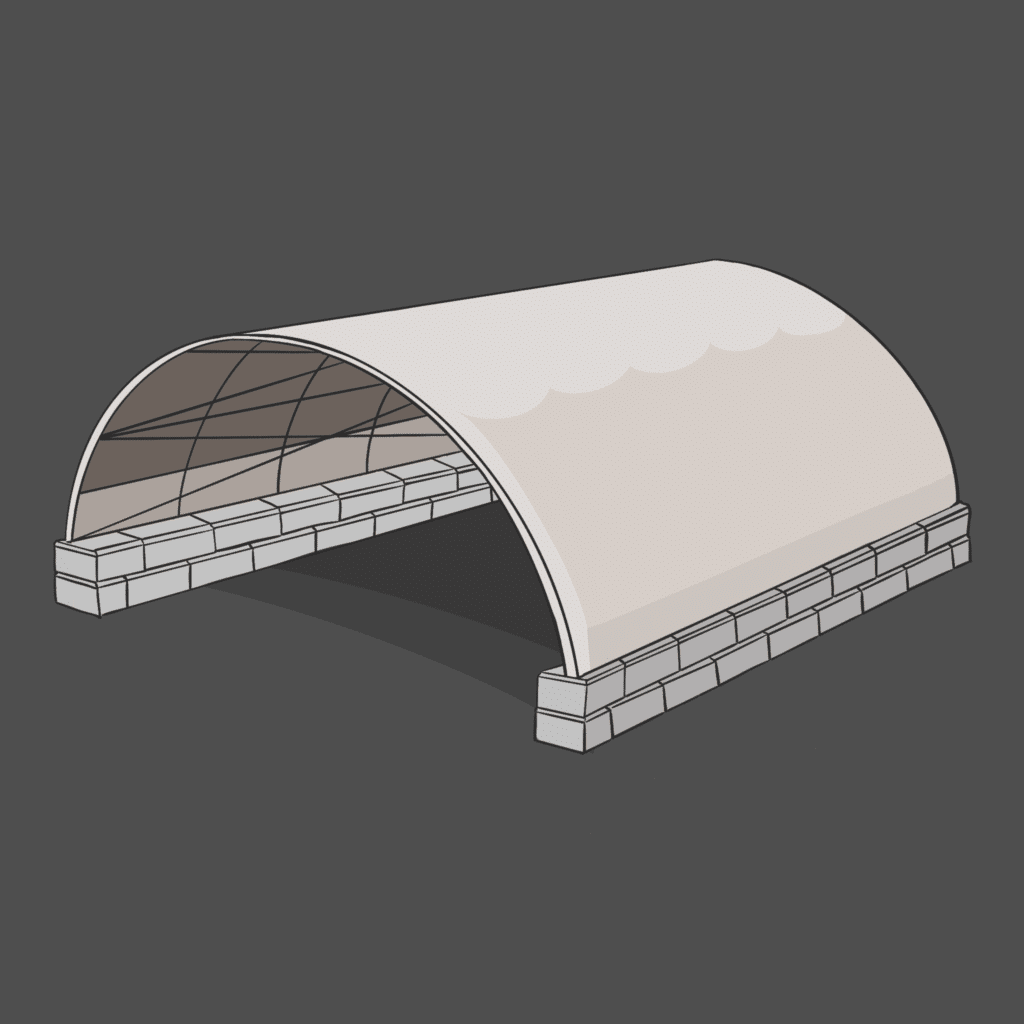
Ballast Blocks
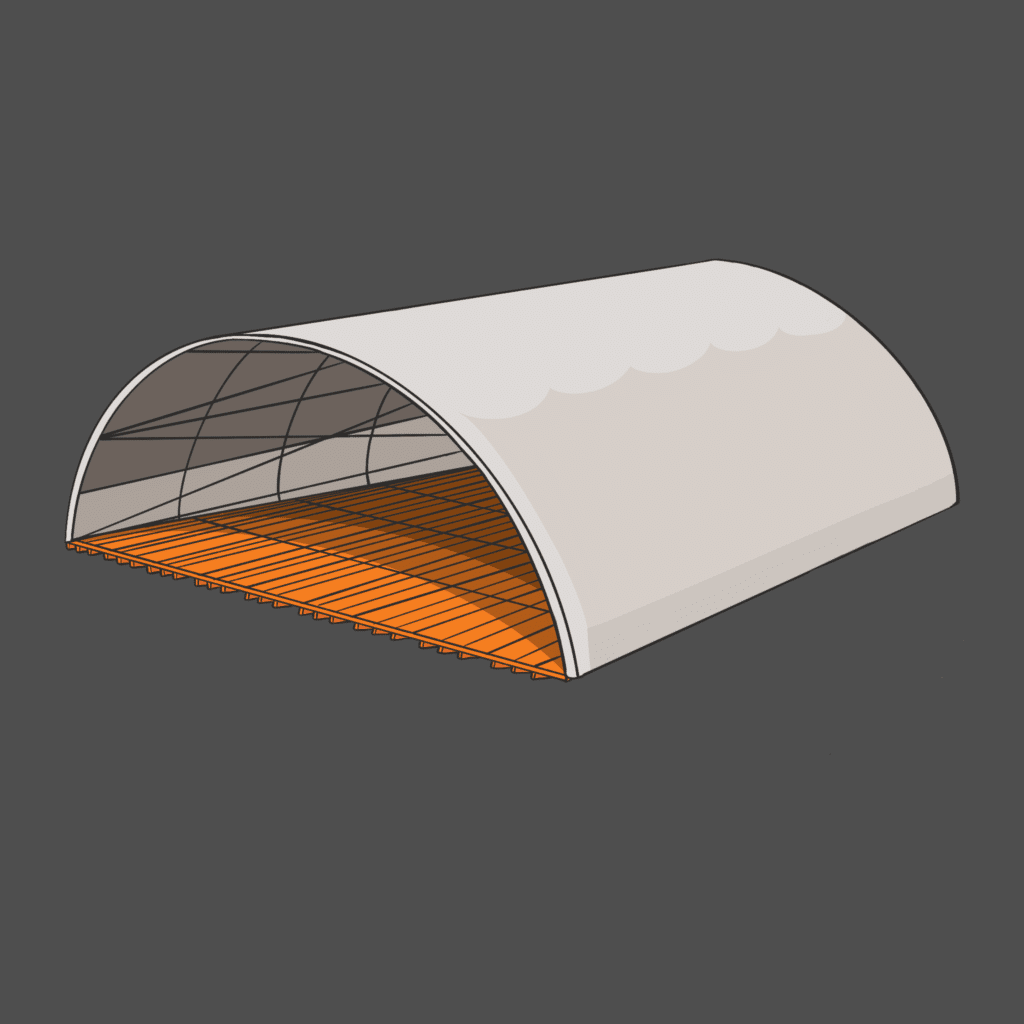
Rig Mats
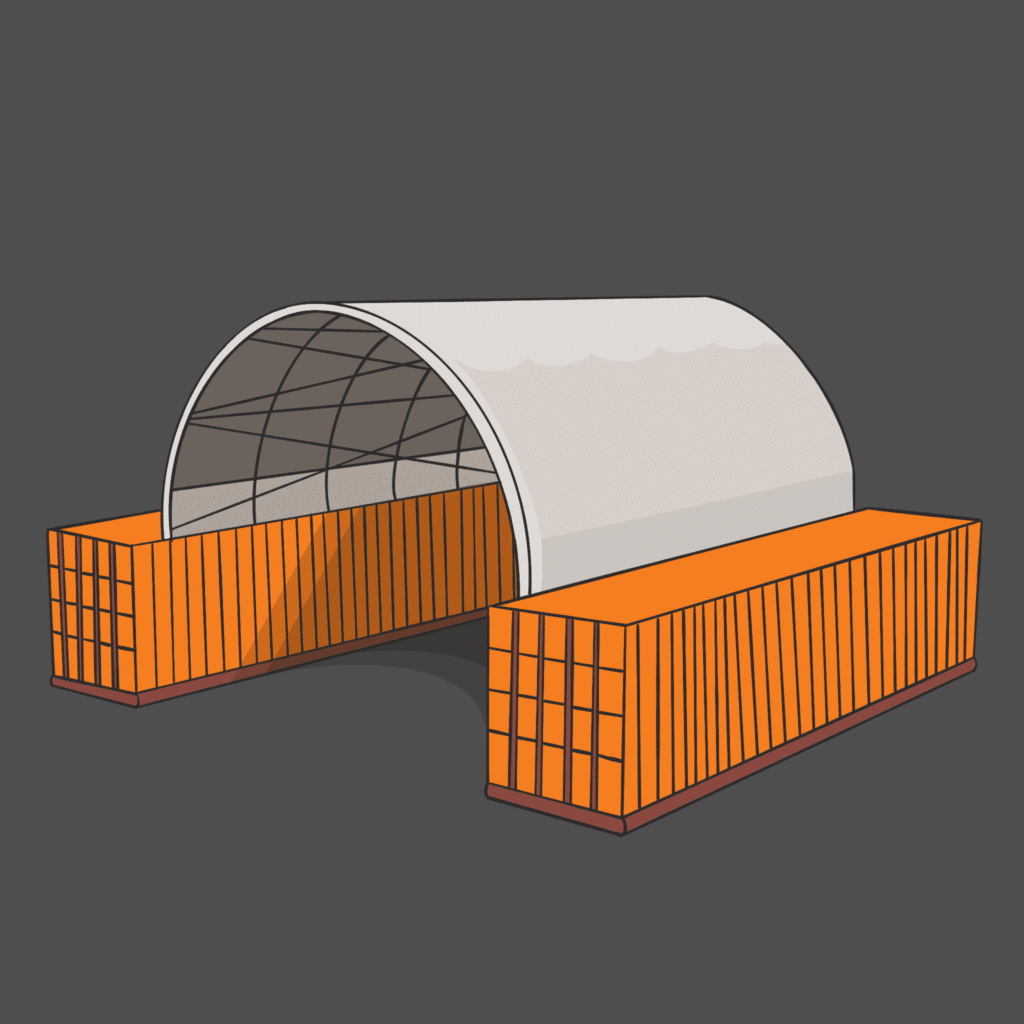
Shipping Containers
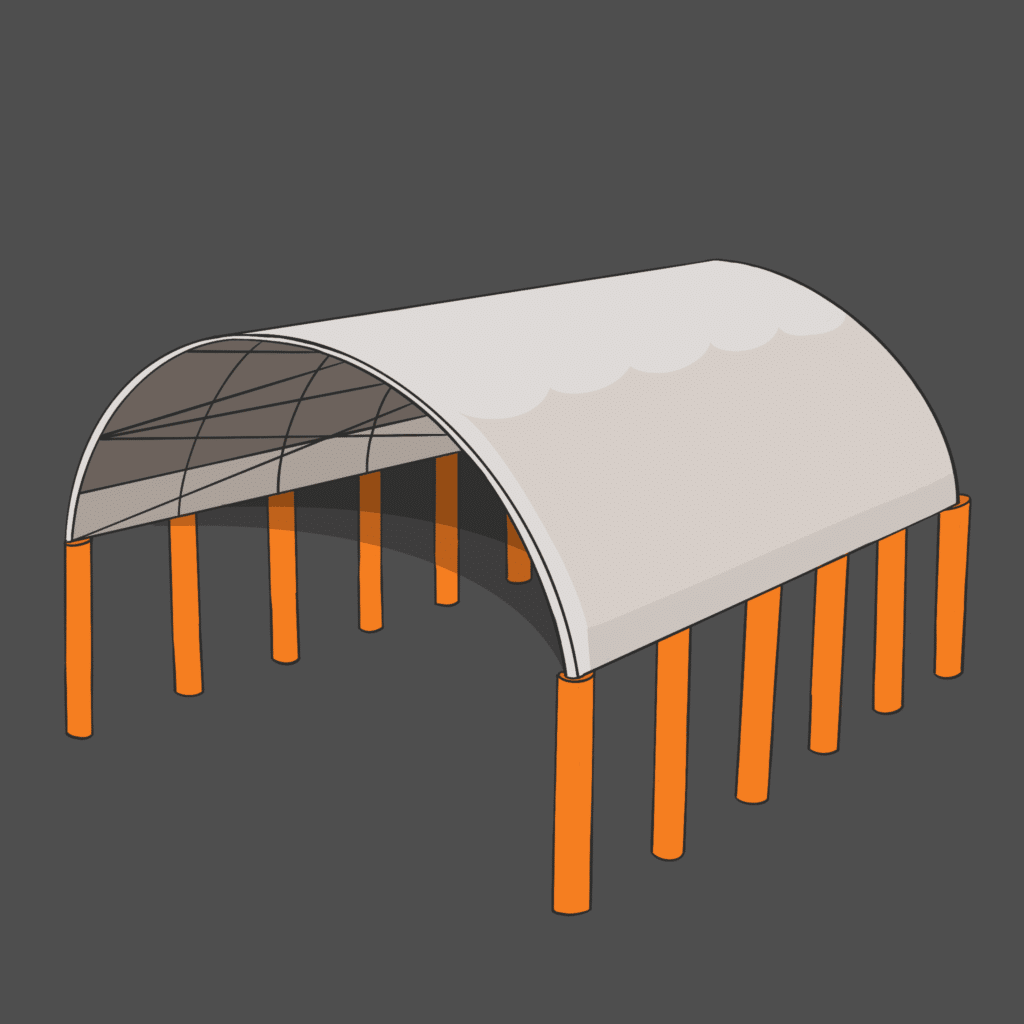
Poured in Place Piers
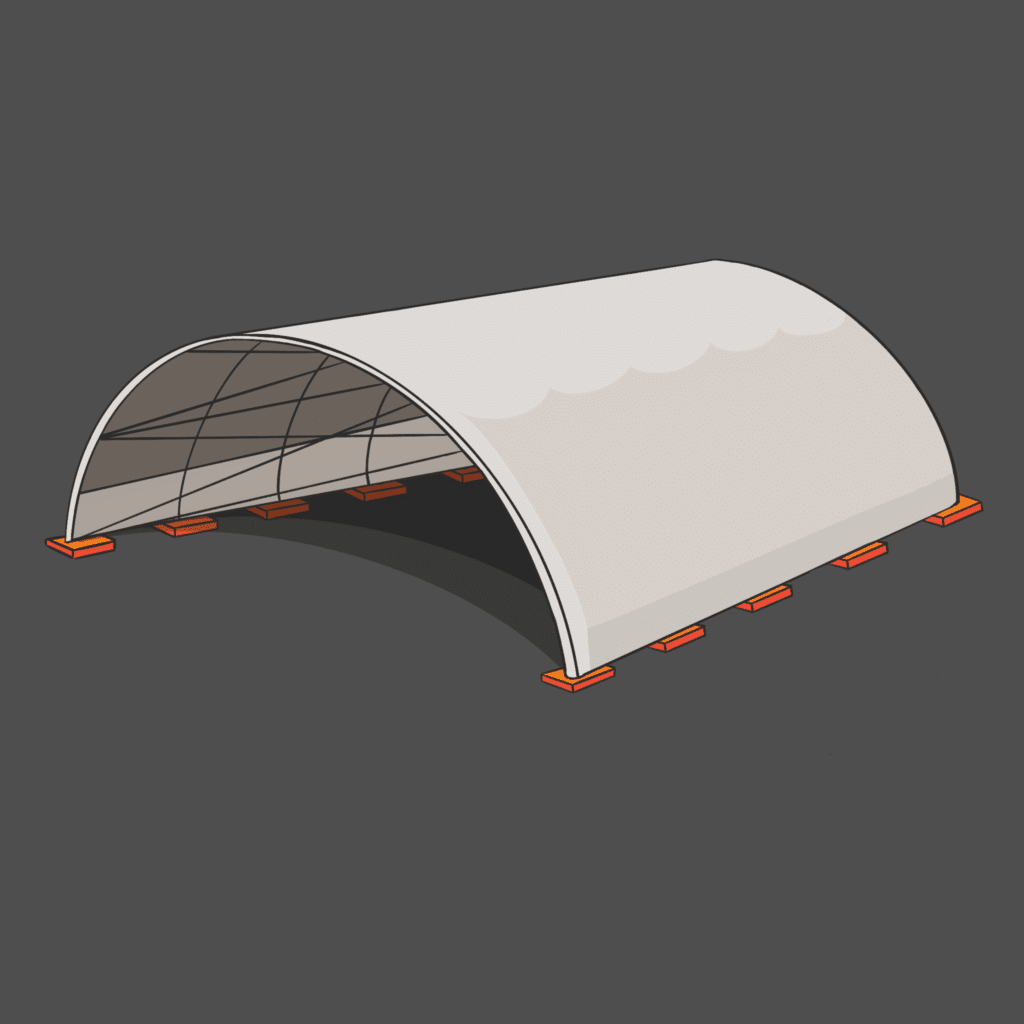
Grade Beam
